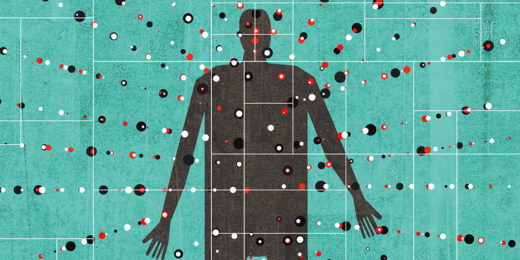Before any medical device (think pacemakers or hip replacements) reaches the market, it has to meet certain safety standards set by the Food and Drug Administration. But these standards are just a first step -- any number of things can happen when the devices hit the clinic.
"The safety standards required by the FDA are for initial approval of the device's use" said Nigam Shah, PhD, associate professor of medicine and biomedical data science. "What we need is a scalable way -- beyond self reporting -- to see how safe and effective these devices are in a population after years of use."
Large numbers of health records detailing the experiences of real-world patients hold the answer, Shah said. And he and his team are using AI to mine them.
A paper detailing the findings of the study appears in npj Digital Medicine. Shah is the senior author. Alison Callahan, PhD, research scientist, and Jason Fries, PhD, research scientist, are co-lead authors.
There are existing methods to report medical device safety issues to the FDA after approval. "But it requires health providers to be really motivated to do so, and sometimes these things end up getting postponed or drawn out," said Callahan. "We also know that self-reported data introduces bias into any data analysis. So it's challenging to get a clear picture of the safety profile of medical devices," she said.
There are other obstacles too. Patient information is often spread across multiple databases, making it difficult to detect any signal for a given device's safety profile or success rates. Shah and his team's AI-based monitoring method gets around that by accessing records from former Stanford patients that have been stripped of personal identifying information.
"There's a wealth of information hidden in these records, and collected by the millions, they provide a valuable resource to show which devices are the most dependable," said Fries.
The idea behind the algorithm is to find a way to link up certain medical characteristics -- things like infection rates, how long an implant lasts before it need to be replaced, and levels of patient pain -- with specific implantable devices. Shah and his team chose to follow hip replacements as a proof of principle, since they're one of the most common medical devices.
The team showed that the algorithm accurately and efficiently identified complication events with each patient's implant. Callahan explained that the algorithm also pointed to a powerful predictor of complication: pain.
"Previous studies have likewise shown that pain is a useful predictor for more serious complications later on," she said. By tracking patient pain levels over time, the model helped reveal a patients' quality of life with that specific implant. By compiling the data from many patients, the algorithm also provided a broader picture of complications and pain levels associated with each device.
The researchers know the algorithm can flag the safest devices. But Fries and Callahan hope that the algorithm could potentially provide even more nuanced information. For instance, people are getting hip implants at younger ages, Callahan said, and will have them for longer periods of time. Ideally, the algorithm could help show which implant models are best for specific populations, for example someone in their 40s versus someone in their 70s.
"The vision is to use this technology to provide tailored, patient-level recommendations based on a person's medical history," said Fries. But for that, they need more data, so they're beginning to deploy the model at other sites such as the VA to see how it fairs.
"Our hope is that as we incorporate new data we will continue to improve our model's accuracy and efficiency while increasing the utility among a broad population of patients," said Callahan.
Photo by Sharon McCutcheon






